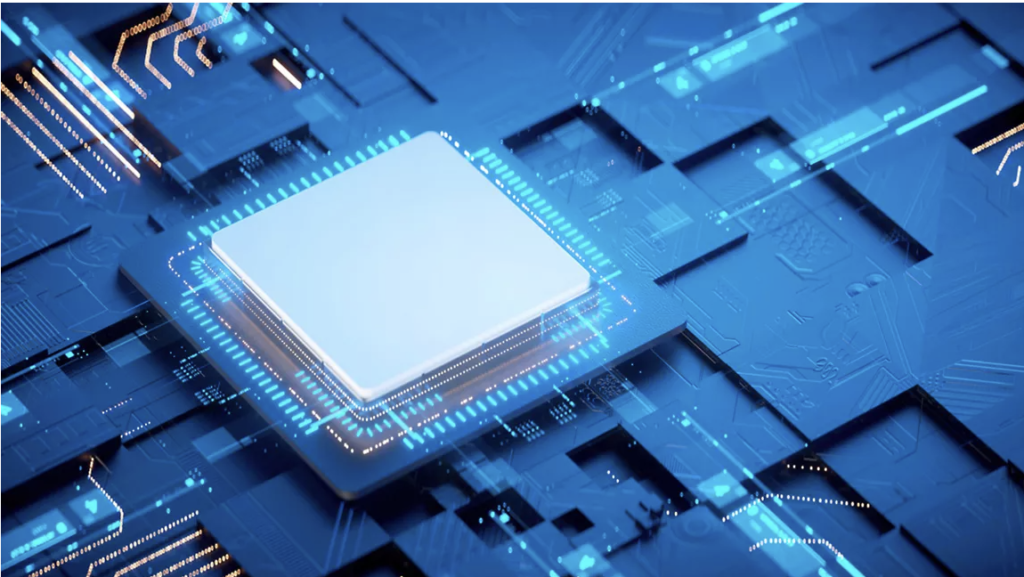
Once viewed as outdated, analog computing now stands equal to digital and quantum giants. But here’s something surprising: analog computing, with its continuous data handling, is much more energy-efficient than digital. The Analog Thing merges old-school charm with modern efficiency, marking the future of analog computing.
Priced at EUR 499, it shows that analog technology trends are both viable and eco-friendly. It’s a great alternative in a world facing energy issues. Educationally, it’s offered at a discount, showing strong support for advancements in analog computing.
Key Takeaways
- Analog computing, alongside digital and quantum, constitutes a crucial computational paradigm.
- Significant energy efficiency makes analog computing a sustainable choice for the future.
- The Analog Thing enables a broad spectrum of analog computing applications.
- Affordable pricing of The Analog Thing encourages the adoption of analog computing future solutions.
- Trademarked by anabrid GmbH, The Analog Thing ensures quality and authentic engagement with analog computing.
The Evolution and Downfall of Analog Computing
When looking at tech history, we note the decline of analog systems was linked to the rise of digital technology. Analog computing, once at the forefront, was surpassed as digital systems became faster and more accurate.
The turning point in computing was the leaps in digital storage technology. It wasn’t just about being more efficient. This shift marked the beginning of the digital age. Now, all data could be turned into digital signals. This was thanks to the development of integrated circuits.
Below is a table that shows how digital advances affected analog and digital computing systems. It shows why the move away from analog system obsolescence was almost guaranteed:
| Feature | Analog Computing | Digital Computing |
|---|---|---|
| Data Accuracy | Prone to noise and interference | Highly accurate, minimal errors |
| Processing Speed | Slower processing time | Rapid processing capabilities |
| Storage Capability | Limited data storage | Extensive digital storage solutions |
| Technology Upgrade | Challenging and costly to upgrade | Easier updates and scalability |
This table proves that digital advancements moved digital systems ahead. Meanwhile, analog became less relevant. However, it also set the stage for valuing the unique aspects of analog computing later on.
In the end, moving from analog to digital marked a major change. It shows that while digital tech moves forward, the special advantages of analog are remembered. They might be rediscovered and valued again, even in our digital world.
Analog Computing Future: Resurgence in a Digital World
In our fast-evolving digital era, a unique community appreciates the appeal of analog. They cherish the simplicity in technology that analog offers. This rising interest isn’t merely for nostalgia. It recognizes the real advantages that vintage analog devices and tangible technology add to our digital lives.
The Allure of Tangible Technology
The charm of tangible technology goes beyond touch. It provides an tactile technology experience that deepens user engagement. When you hear a camera’s shutter or feel the resistance of a rotary dial, that’s the simpllicity in technology missing in digital forms. These vintage analog devices bring us into an analog sanctuary. It’s a place where technology’s physical nature encourages mindful interaction.
Demand for Focus in an Era of Distraction
In a world full of digital interruptions, analog technology stands out. It emphasizes focus and intentionality. Analog devices create a space for active, present engagement—not just passive consumption. This move towards analog isn’t only about cutting digital overload. It’s also about improving our life quality, offering an analog sanctuary away from constant digital buzz.
Real-World Applications Cementing the Role of Analog
Analog isn’t outdated; it’s critical in areas where real-world applications of analog guarantee accuracy and reliability. In critical fields like aerospace and healthcare, the stakes are high. Industry use of analog computing, aerospace analog computing, and medical devices analog solutions are essential. For example, analog computers masterfully handle aerospace analog computing tasks like air turbulence. In healthcare, analog tools monitor vitals in real time, key for urgent care.
The Rising Star of Analog Computing in Industry
The relentless march of analog computing development has rekindled interest in its applications, proving especially vital in sectors where precision and rapid response are paramount. With a reputation for handling continuous, real-time data efficiently, analog computing is emerging as a pivotal technology in various industries.
One of the most significant analog computing advantages is its ability to process data in a way that mimics natural phenomena. This is crucial in fields like aerospace, where simulation and control systems deal with continuously changing data. These systems benefit from analog’s precise and quick execution of tasks, improving both performance and safety.
When we look deeper into the industry applications of analog computing, its impact is evident beyond aerospace. In healthcare, analog devices play a key role in patient monitoring systems where continuous data flow is essential for real-time decisions. Similarly, in large-scale industrial automation, analog systems control manufacturing processes that demand high precision and efficiency.
| Industry | Application | Benefit |
|---|---|---|
| Aerospace | Flight control systems | Enhanced precision and real-time processing |
| Healthcare | Patient monitoring systems | Accurate real-time health monitoring |
| Manufacturing | Automated control systems | Increased efficiency and precision in operations |
As we embrace the potential of analog computing, its role in industry is set to expand. It promises to improve processes and drive innovations that change our interaction with technology. The integration of analog systems marks a leap towards a future that’s more responsive and dynamic.
Innovating for Tomorrow: Analog Optical Computers and Advanced Algorithms
The journey of computing is now in an exciting stage with the Analog Iterative Machine (AIM). This marks a big leap in optical computing. AIM was made to solve big optimization challenges that slow down digital chips. It brings a new approach to efficient and powerful computing. By using the speed of light, AIM speeds up computing and cuts energy use a lot.
Introducing AIM: A Breakthrough in Optical Computing
In the past three years, a dedicated team has been perfecting AIM. This analog optical computer is ready to tackle tough optimization problems. These problems are key in finance, transportation, and healthcare. Traditional digital systems can’t keep up as these problems grow. But AIM can do calculations about 100 times faster than current digital ways. This makes it a big change in optical computing.
Microsoft’s Leap into the Analog Computing Future
Microsoft optical computing has started using AIM tech. They see its big potential to change how we solve tough optimization problems. With AIM, Microsoft is moving towards more sustainable and powerful computing. By adding AIM to their research, Microsoft is pushing computing to new limits. They are also creating a new standard for the industry.
Tackling Real-World Optimization with Analog Solutions
AIM has many uses across different sectors. In finance, it’s used for portfolio optimization. It helps banks pick the best asset mix to increase returns and lower risks. In healthcare, it improves patient care through advanced algorithms. AIM also makes transportation logistics better by optimizing routes and managing freight, which saves money and increases efficiency.
AIM is more than a tech breakthrough. It’s a vital tool that boosts industries. It leads us to a future where analog computing solves complex problems.
Conclusion
The future of analog computing looks very bright. It’s a break from all the digital stuff we’re used to. Analog systems use real-world things to work differently from digital ones. This isn’t just about looking back. It’s about finding better ways to do things that digital can’t yet.
Analog computing is set to change many areas. Like in AI, it can create systems that learn on their own and use less energy. In healthcare, it can handle huge amounts of data from scans. This could lead to much better tools for doctors and save many lives. It also uses less power, which is great for the planet and portable devices.
The combination of analog and digital technology offers exciting possibilities. It can solve problems that one on its own can’t handle. This blend could make things work better and more efficiently in our lives and jobs. The future with both technologies is not just promising; it’s going to be a big deal.
FAQ
What is fueling the future of analog computing?
The future of analog computing looks bright because it’s great at handling real-time data. This ability is key for industries needing quick, precise data processing. Add to this the recent developments in the field, and you see why interest is growing.
How did the rise of digital technology contribute to the decline of analog systems?
Digital technology grew because it could store more data, process faster, and offer more accuracy through technologies like integrated circuits. This progress made analog systems less common, even though they were once very popular.
Why is there a growing appeal of analog or tangible technology in today’s digital world?
People enjoy the feel and experience of using analog or tangible tech. It gives a sense of hands-on control and simplicity. Plus, it offers a break from the online world, allowing for more focused and meaningful use of technology.
What are some real-world applications of analog computing?
Analog computing is crucial in areas like aerospace and healthcare. These fields need reliable, real-time data handling for critical tasks. Things like monitoring health or keeping planes stable rely on analog computing’s precision.
What advantages does analog computing bring to industry applications?
Its big wins include real-time data processing, quick responses, and accuracy in complex operations. These qualities are invaluable in critical environments where performance and safety matter.
What is AIM and how does it represent a breakthrough in optical computing?
AIM stands for Analog Iterative Machine. It’s a cutting-edge analog optical computer. AIM is amazing at solving complex problems efficiently and uses less energy than digital computers. Its speed and capability could change many industries.
How is Microsoft contributing to the analog computing future?
Microsoft is exploring analog optical computing with their AIM project. They’re focused on tackling complex problems more efficiently than digital solutions can. Their work in analog computing shows they’re committed to leading in innovative technologies.
What roles do analog solutions play in real-world optimization?
In fields like finance, healthcare, and transportation, analog computing is key. It’s great at processing complex calculations quickly. This helps in making fast, effective decisions that are crucial in these industries.
What are the future prospects of analog computing?
Analog computing is gearing up to make a significant impact. It shows promise in analog AI and solving real-world challenges. With ongoing improvements, especially in optical systems, it’s set to revolutionize technology and meet specific industry needs.
Future App Studios is an award-winning software development & outsourcing company. Our team of experts is ready to craft the solution your company needs.










